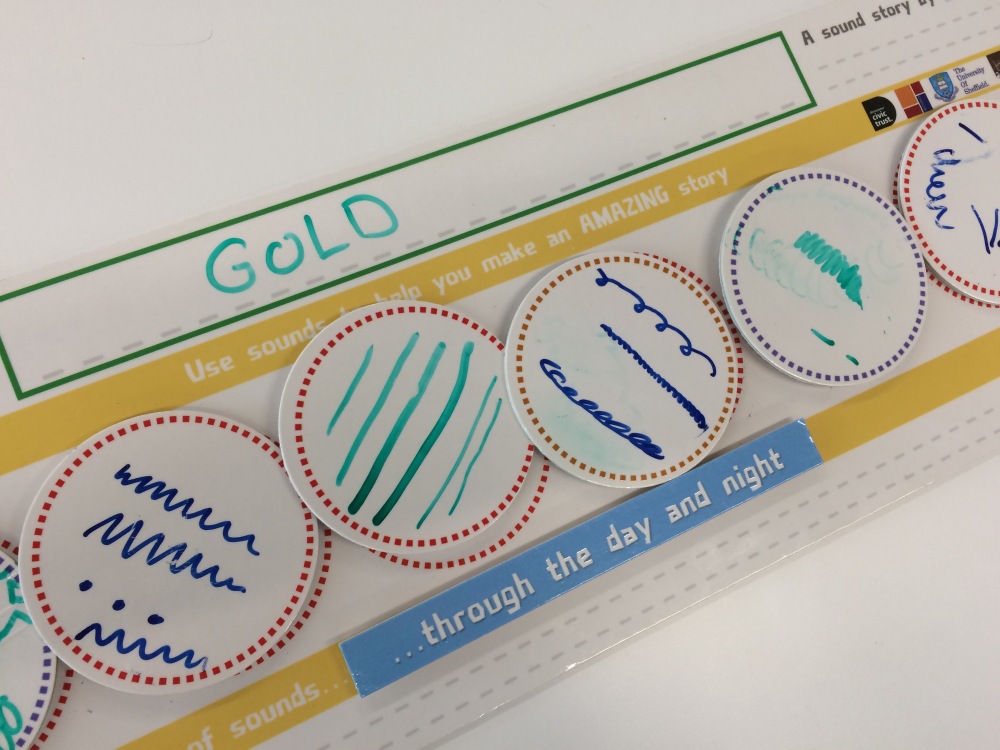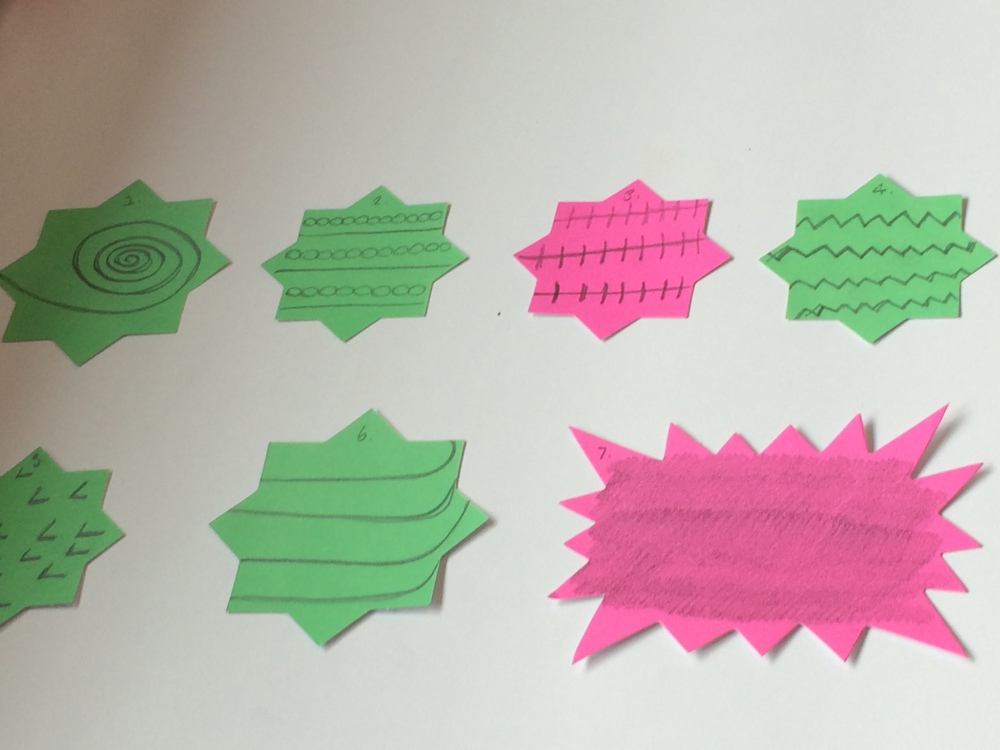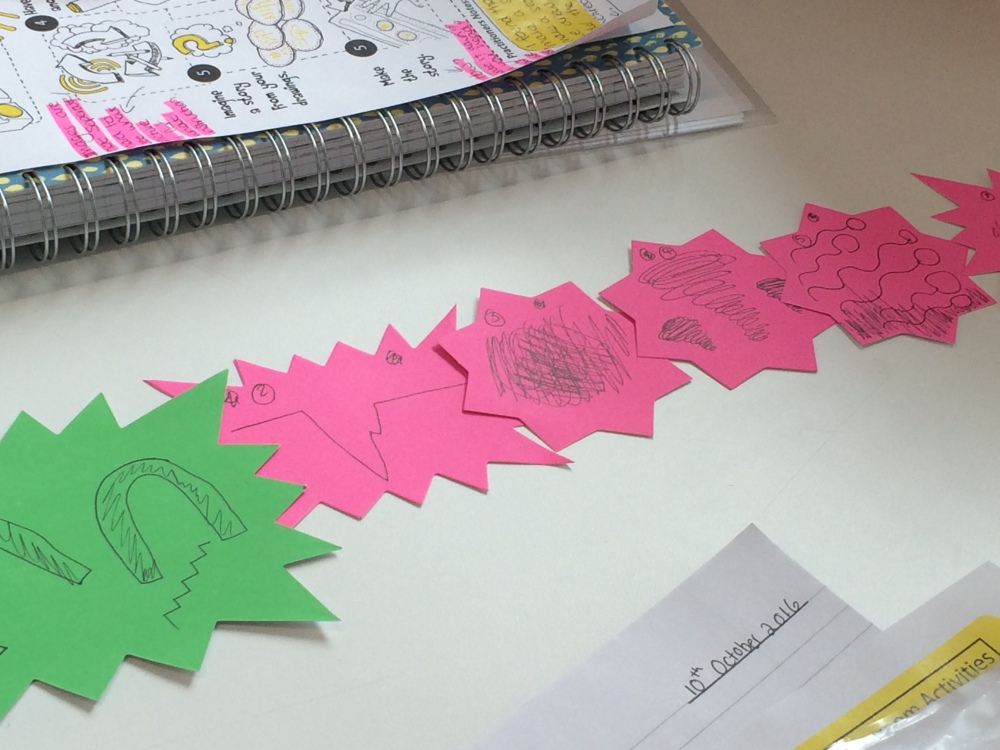Today I piloted one of our new Activity Cards to support the use of the Sounds Toolkit in Early Years Settings with my undergraduate students on the BA in Early Years and Childhood Studies at Manchester Metropolitan University. All the students have experience of working within early years settings and so it was a great opportunity to get their feedback and make sure that the Cards will work in practice. The students used the draft Activity Card (which can be accessed here) to frame their use of the toolkit. The posts below capture: 1) their experiences of following the Activity Card and using the Toolkit; 2) recommendations for how to improve the Activity Card; and 3) how they would use it to support children’s literacy learning in practice. The comments from the groups in today’s session are below:
Group 1

In this post we reflect on listening to pre-recorded sounds to create our own story using the Sounds Toolkit as a group. We focus on how the Activity Card was a useful means of understanding what was expected of us.
It was very interesting for us to use the Toolkit, as it was the first time we had all experienced it. We had fun trying to make up the story as it was a great way to use our imagination. At first we listened to the sounds – as a group we decided to listen to one sound each and then we worked as a team to bring the sounds together, which in turn allowed us to create a story. The story included everyone’s interpretation of each sound – each sound inspired a collective narrative and led to us giving the story the title of ‘GOLD’.
While fun, we found the process difficult in certain places as the worksheet didn’t offer enough explanation. At the beginning of the worksheet it tells you to listen to the sounds but doesn’t tell you to make a story till the very end; when we were developing our story we had trouble remembering what the sounds were. We would recommend telling children right at the start that they are going to make a story with the sounds. It would also be useful for a practitioner to elaborate further on the step ‘make your own story’ – we found this confusing because it doesn’t explain whether you have to link a story to the sounds that were played or whether the story can be created independently of the sounds.
We also felt that the Sound Toolkit could be used in different contexts, such as sensory rooms and environments beyond the classroom. In addition to drawing sound children could also use movement or modelmaking (with Playdough) to explore sound.
Group 2

We found the Sounds Toolkit relatively easy to use. We did find that as adults we tended to attach a singular meaning to the sounds which meant that our story was quite literal.
After reflecting on using the Toolkit as a group, we felt that the ‘listening’ part of the activity could be extended so that the children could fully experience each sound and spend more time thinking about how they want to draw it.
We think that the Activity Card and Toolkit could be used in a number of different subjects such as art, music and literacy. It can also include children with English as a second language as they are able to listen to the sounds and draw what they hear. The activity may also be useful for children with communication difficulties as they can express what they are thinking through images.
We think that children will learn communication skills from sharing their stories. They will also explore ways of telling stories, perhaps identifying how sounds can be used in stories for dramatic effect, such as the repetitive sounds in the 3 little pigs. Children can also learn that stories have a beginning, middle and end. They will learn creative thinking skills from working across sounds, images and storytelling.
Group 3

The Sounds Toolkit was interesting to engage with, and we were able to follow the Activity Card instructions after carefully reading through them. The activity itself allowed us to explore and expand our ideas about sound in imaginative ways. The toolkit didn’t require many resources making it easy to use. It is also a unique resource that is not common within an everyday early years setting.
We felt that the instructions could be clearer as they were hard to follow at first. The activity itself is perhaps preferable for small groups or individuals rather than for a whole class as opinions may differ between children making it difficult to bring together ideas into a collective story.
The Toolkit might prove particularly useful for children who find it hard to express themselves verbally/ textually. The Toolkit could support children’s development and learning in various ways, for example children are likely to develop sensory skills, communication skills, fine motor skills and their sense of creativity.
Overall we thought the Toolkit was versatile and could be used in a range of different settings including classrooms, outdoor areas, play therapy sessions or one-to-one sessions.


So pleased you enjoyed using the toolkit, I certainly enjoyed designing it! Though I haven’t read the latest activity cards (the link doesn’t work on my computer), it seems from reading this, that there’s a bit of a debate to be had about how prescriptive to be in instructions – too many possibilities can be overwhelming for some, but too few can restrict imaginations…
LikeLike
Lovely reflections on the toolkit and activity cards.
One of the most problematic parts of the activity seemed to be assembling the sounds into a story. This mirrored actually what we observed at the launch of the toolkit earlier this year – children were most interested in exploring the sounds in quite an experimental or experiential way, rather than pinning them down or connecting them together into stories.
This also made me think of a paper I am currently writing with a colleague in Australia, Margaret Somerville. We are thinking about the role of place in children’s emergent literacies, and in some of our examples play begins with stories and then descends into embodied immersive play with materials in place, words and stories fall away and become abandoned. This is in contrast to how materials and place are often positioned with regard to early childhood literacies – are sparks or inspiration for literacy practices, from which sentences, paragraphs, or stories would build.
Love the suggestions for sensory rooms, modelling and movement too.
LikeLike